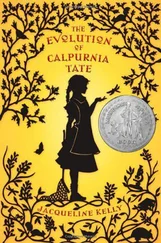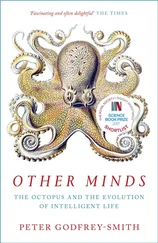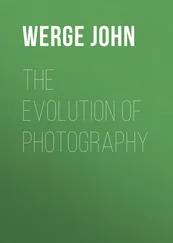The interplay of these influences, and others not yet mentioned, were such as to create three subperiods in the history of castle defense and thus in the history of political development. The first period, when transportation inadequacy was the chief factor, is the period of political feudalism. This political period continued until the late eleventh century because of the importance of limitations on a vassal's military service in feudal customary law. Eventually feudal knights began to be replaced by similar fighters serving for pay rather than for feudal obligation. These mercenary men-at-arms (as they are called) served as long as they were paid, and thus could capture a castle by siege simply by starving it out if transport of supplies was adequate. Since all possessors of castles did not have sufficient economic resources to obtain mercenary men-at-arms, those who did could besiege those who did not and force obedience upon the latter. This led to a reduction in the number of independent political units because it reduced the number who could refuse obedience to orders. Thus the number of political units in Europe became less, and the areas over which their orders could be enforced (or over which their "writ ran," as the saying went) became larger. This led to a second stage in the development of European political organization, known as "feudal monarchy." The number of political units in Europe was reduced from thousands to hundreds.
The next step forward in the development of the political level reduced the number of European political units from hundreds to scores and gave us a new stage in political development to which we apply the name "dynastic monarchy." The military factor that contributed to its growth was the rise of artillery that made the private stone castle obsolete, since guns could shatter the walls of a castle and thus force its owner to submit. Artillery first appeared about 1325, but its effects were not clearly evident for two hundred years. Then they became so clear that when a great lord wanted a residence after 1530 he built a palace rather than a castle. In this way, at the price of political submission to the royal artillery, the lord obtained an indefensible, but much more comfortable, residence at a lower cost.
The number of lords with the financial and economic resources to obtain artillery was, of course, much less than the number who had mercenary men-at-arms, so that the former could enforce obedience from the latter. Political units became fewer in number and larger in area. The possession of artillery became the dividing line between public authority and private power, and later between possession of castles and the lack, as well as between the possession of a royal title and its lack. All these served to demark a period of "dynastic monarchy" in the political level at the rough date 1500.
This period of dynastic monarchy (1500-1800) and even the preceding period of feudal monarchy (1100-1500) are, of course, subsequent to the Age of Gestation of Western civilization, but this examination of the factors necessary for the rise of these later stages of political development will show the futility of the Carolingian effort to create a revived universal monarchy at a time when even the earliest of these factors, transportation, was still in retreat.
As long as transportation was lacking and political disorder continued, the Age of Gestation continued. The demands of political and military life made it almost impossible for the feudal organization to amass surpluses and to direct these surpluses into expansive channels. Only in the final quarter of the tenth century was this situation reversed, and a new period of expansion, the first in Western civilization, began.
3. Expansion
The first stage of expansion in Western civilization lasted for about three centuries (970-1270) and was one of the greatest of such periods in human history. Its instrument of expansion was the feudal system in which a small minority of fighting men and clergy were supported by a great majority of peasants. The contributions of the latter to the former were far greater than the costs of protection and justice they received in return, so that surpluses accumulated in the possession of the upper class. At first these surpluses were used for political ends, to build castles or to rebuild older timbered fortifications in stone. But soon investment in economic activities began. This appeared either in agriculture or in the encouragement of long-distance commerce in luxury goods. The agricultural expansion was extensive, and took the form of establishing manors in unfilled areas by clearing wastelands or forests or by draining swamplands. When this was done by secular lords, the new manors were generally similar to the older manors of the self-sufficient, balanced three-field type. But increasingly the manors spread by clerical, above all by monastic, groups were of a new type producing still the basic needs of their own inhabitants but adding to this an increasing surplus output of some product for sale off the manor. In grassy or hilly areas these surplus products from new manors were likely to be wool, wines, or dairy products (chiefly cheeses), but in ordinary terrain it might be grain.
The accumulation of surplus in the hands of "the lords spiritual and temporal" also created a demand for remote luxury goods derived from commerce. From the eastern forests opened by Varangians there came, by way of the Baltic, various forest products such as furs, honey, wax, and later hemp, tar, and even lumber. From the Levant there came across the Mediterranean more exotic products, including fine textiles, fine metal products, spices, and dyes. Eventually, links between these two great sea routes were established, the earliest being the Russian river route, then from Italy across the Brenner to Innsbruck, Nuremberg, and the North German rivers, or across the western Alpine passes to the Rhone, Champagne, and the northwestern rivers to the Low Countries. In the first part of the fourteenth century an all-sea link was opened by way of the Strait of Gibraltar and Bay of Biscay to the Narrow Seas.
The revival of commerce, especially in the twelfth century, gave rise to a new social class isolated from the agricultural process, and living in towns rather than on manors. This new middle class, or bourgeoisie, created such a demand for the necessities of life that a new kind of commerce, of local origin and concerned with necessities, appeared.
These three innovations—commerce, the middle classes, and town life—represented a social and economic revolution in Western society. They led to increased literacy, support for the revival of public authority, new ideas, new morality, and acute religious problems. Taken together these provide a fairly typical example of Stage 3 in a civilization.
The usual characteristics of Stage 3 are easy to identify in the period 1270-1300: increased production, growing population, geographic expansion, and increased knowledge. To a lesser degree, and somewhat belated, can be seen the growth of science, but democratic elements, while present, were unable to develop far because of the continued supremacy of specialized weapons. These kept power securely in the hands of a minority.
4. Conflict
The old view of our grandfathers that the Middle Ages was a static and backward era is now accepted by almost no one, but it is not so generally recognized that medieval expansion was slowing down by the end of the thirteenth century and that the society was entering upon a typical age of conflict. The three hundred years of expansion that were drawing to a close as Aquinas died in 1274 had been financed by the demand of the upper classes for luxury goods of distant origin. In time this demand was reinforced and extended by the demands of the successful commercial groups for both luxuries and necessities. But by 1274 the feudal organization, especially the feudal lords, had become institutionalized into an obsolescent structure with few functions and a powerful determination to resist further change and to defend its own social position. This institutionalized feudalism is called chivalry. As a military system it was being replaced by royal and ducal forces based on mercenary men-at-arms. As a political influence it was being replaced by royal and princely rulers served by clerical or even bourgeois officials. These latter had, for the prince, the great advantage that they could count, keep records, and were literate, and yet had no independent military power of their own. Even as a social group, the feudal nobility were being challenged by persons of other origins, such as royal officials, clerical leaders, and wealthy bourgeoisie. The nobility had no desire to continue the process of change that had brought them to this situation, but they were in no position to stop continued development.
Читать дальше










